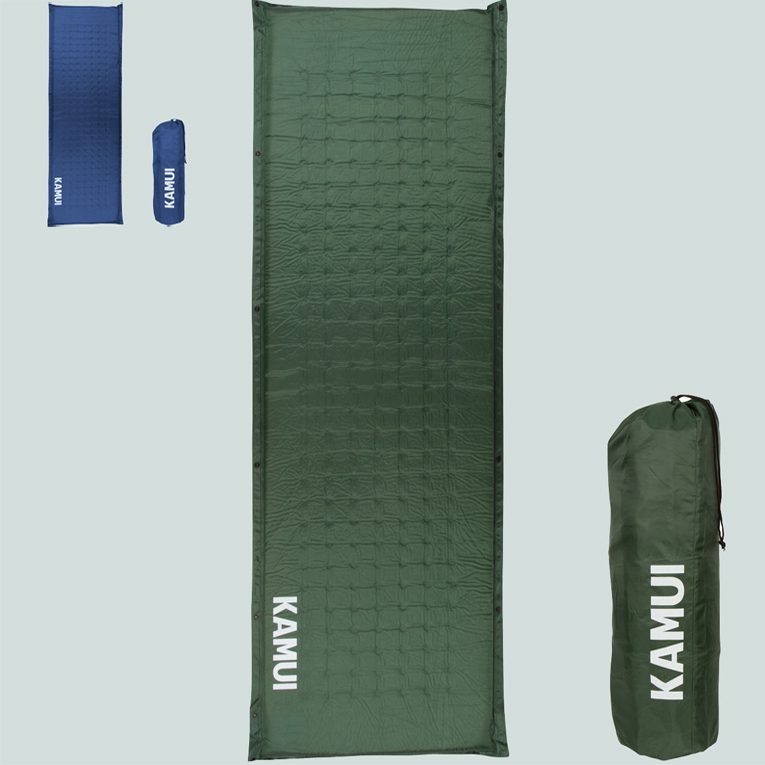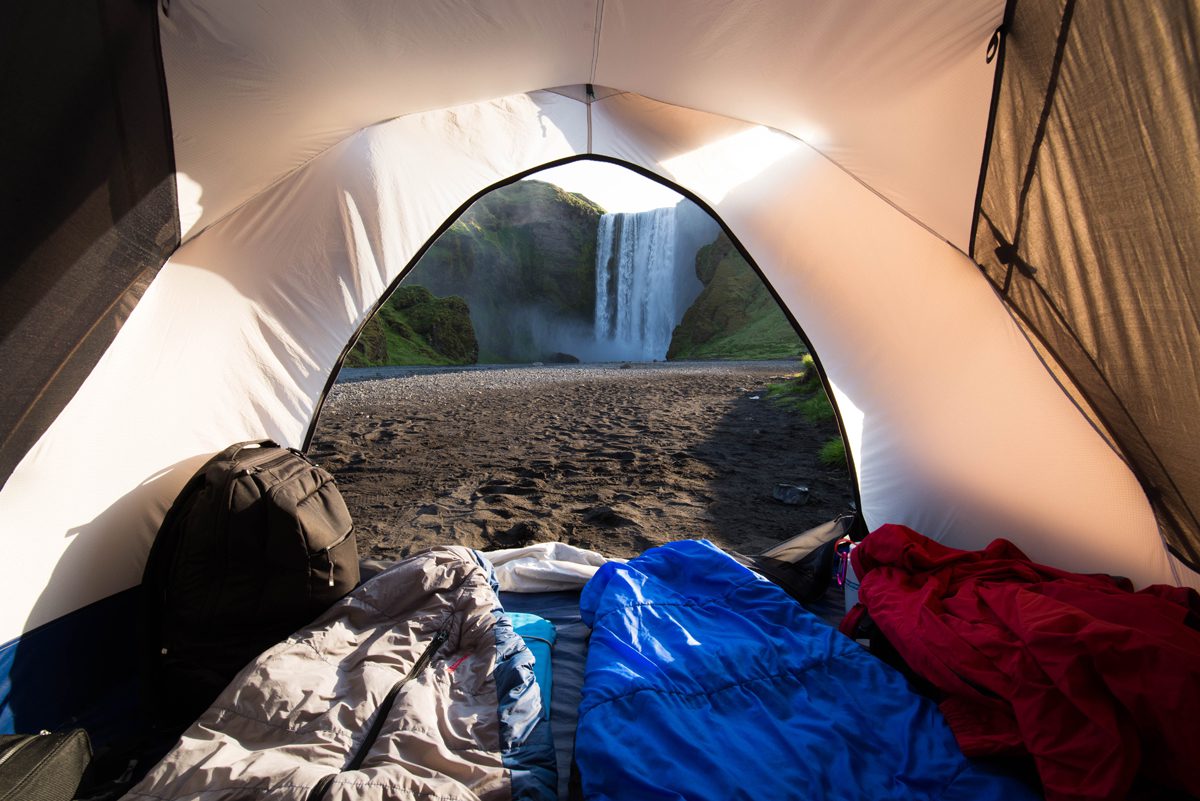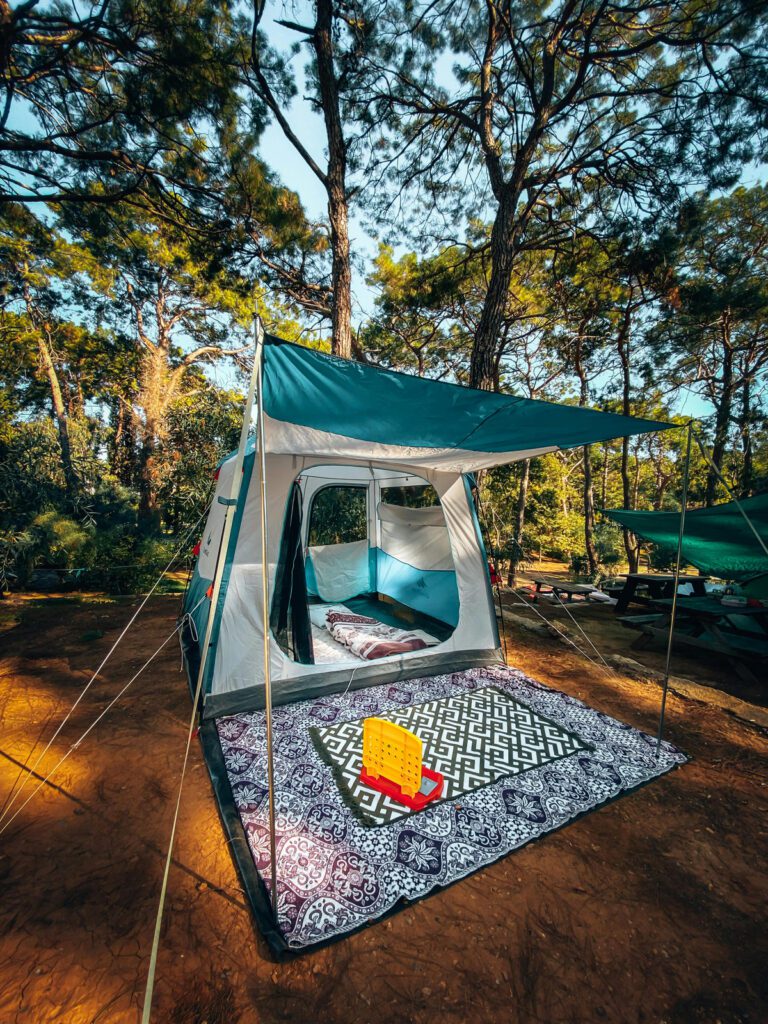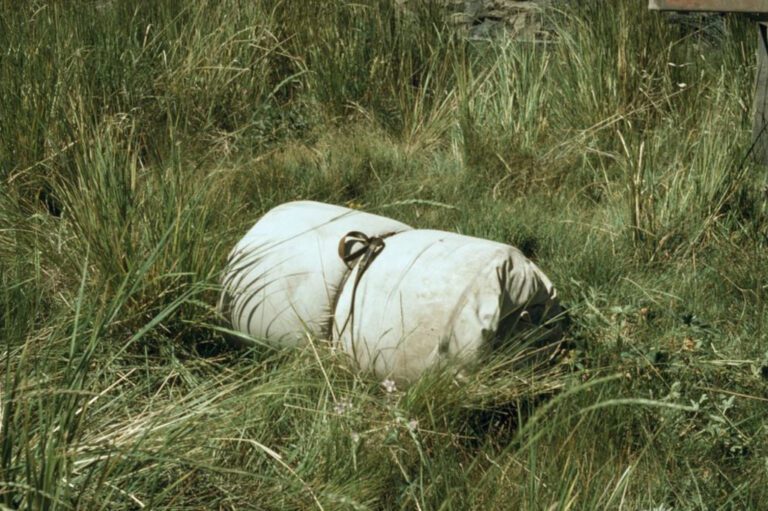Phone
+1-650-666-095
Contact E-mail
[email protected]
Address
16192 Coastal Hwy, Lewes, DE 19958-3608
Self-Inflating Sleeping Pad vs Air Mattress: Features and Best Uses
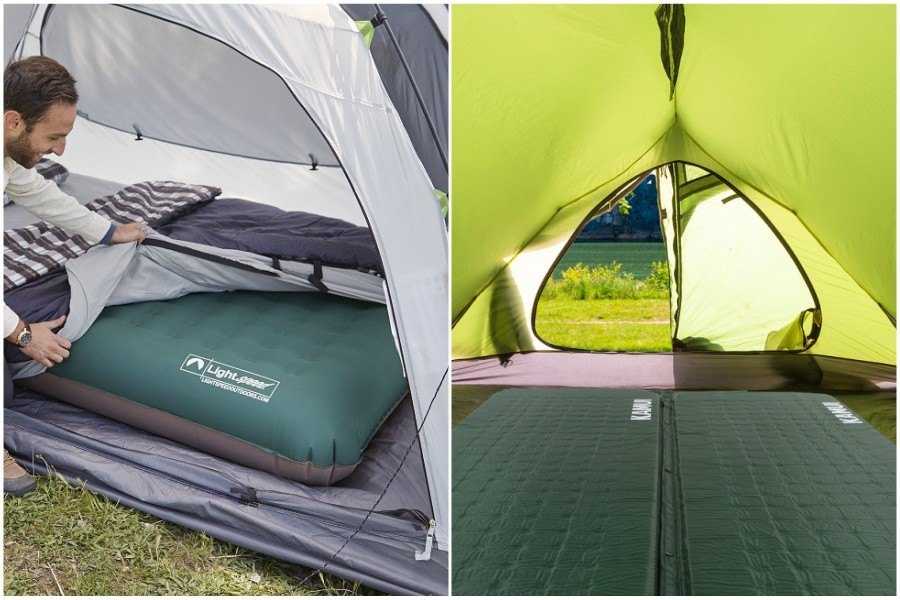

Self-Inflating Sleeping Pad vs Air Mattress? If you belong to the 60-70% of the population worldwide who experience back pain at some point, you must carefully consider the type of pad that suits your needs. The fear of exacerbating your back pain should not prevent you from a much-needed escape from reality to the beauty of the outdoors. It is no secret that you need a comfortable piece of bedding while you are out camping. This becomes even more important if you are part of the 37% of men and women who have a negative experience with sleep due to their back pain. Experts say that sleeping on the wrong mattress can lead to or worsen lower back pain. Therefore, you must choose the best option for your situation when you go camping.
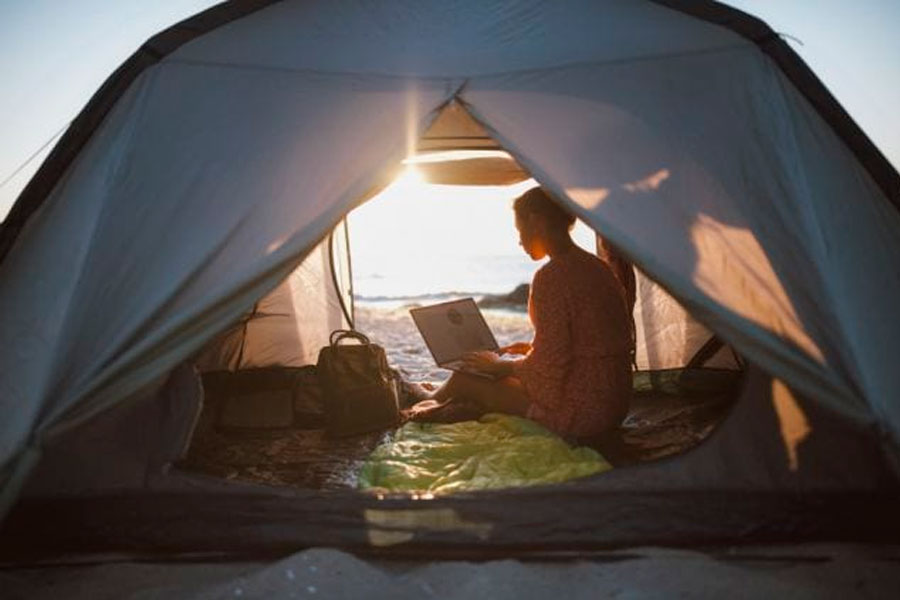

In this article, we will discuss the benefits and disadvantages of sleeping platforms like self-inflating sleeping pads and air mattresses. We will compare outdoor bedding options by price, R-value, sleep system importance, comfort, portability, and ease of use. We will also share which camping situations each option is best for. By the end of the review, you can choose which option, sleeping pad or air mattress, is best for you and your needs.
What is An Air Mattress
An Air Mattress is a functional bed that is heavier and bulkier than a pad for sleeping but gives utmost comfort even in the wilderness. The air mattress is your best choice if you aim for the best comfort regardless of weight and size. Manufacturers tend to create it by combining fabric, rubber, and plastic to create a functional bed in the size that you need. Because they inflate and deflate as needed, they are usually used when traveling or expecting more house guests than you have bedrooms for. Although air mattresses are common in many situations, there are also times when a self-inflating sleeping pad is a better option.
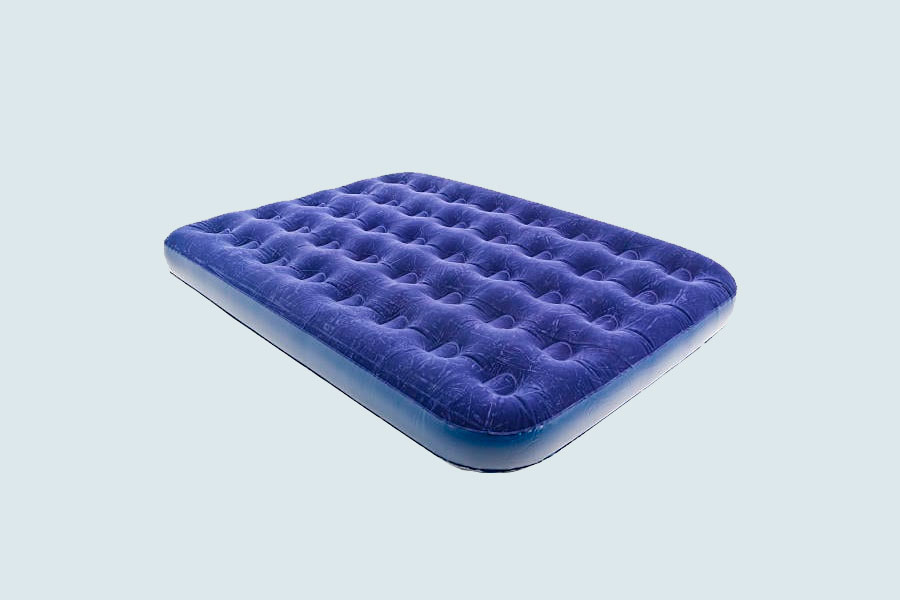

What is A Self-inflating Sleeping Pad
Chances are, you already know what an air mattress is, and you or someone else has slept on one before. What you might be less familiar with is a self-inflating sleeping pad. What is a self-inflating sleeping pad? Ultimately, a self-inflating sleeping pad is a layer of compressed foam sandwiched between airtight fabric and a valve that is usually fastened. Once you open the valve, the foam expands, which sucks air into the mat without any extra effort on your part. After a couple of minutes, the mat will be semi-firm and ready for you to sleep on in no time. Let’s look at our categories to see where this option beats an air mattress.


Features
| TYPE | Air Mattress | Sleeping Pad |
|---|---|---|
| FEATURES | ||
| Price | – | ✓ |
| R-Value | ✓ | – |
| Sleep System | ✓ | – |
| Comfort | ✓ | – |
| Portability | – | ✓ |
| Ease of Use | – | ✓ |
| BEST USES | ||
| Car Camping | ✓ | – |
| Backpacking | – | ✓ |
| Sleeping in vehicle | ✓ | – |
| Hammocking | – | ✓ |
Price
Winner: Self Inflating Sleeping Pad
While price is not always a primary factor, it plays a major role in buying. While hiking and camping are fun hobbies, you do not want to spend too much on extra gear. Sometimes, this results in wasting your hard-earned money on sleeping equipment and accessories that are not useful for your situation.
After completing the appropriate research, set up a clear budget before buying any sleeping equipment. This strategy helps you find specific bedding material within your price range and saves you money in the long run.
Self-inflating sleeping pads are the winners in this category. On average, you will pay at least $35 for a low-end but functional self-inflating sleeping pad. Since sleeping pads use fewer materials and are more lightweight, they tend to be cheaper than your average air mattress.
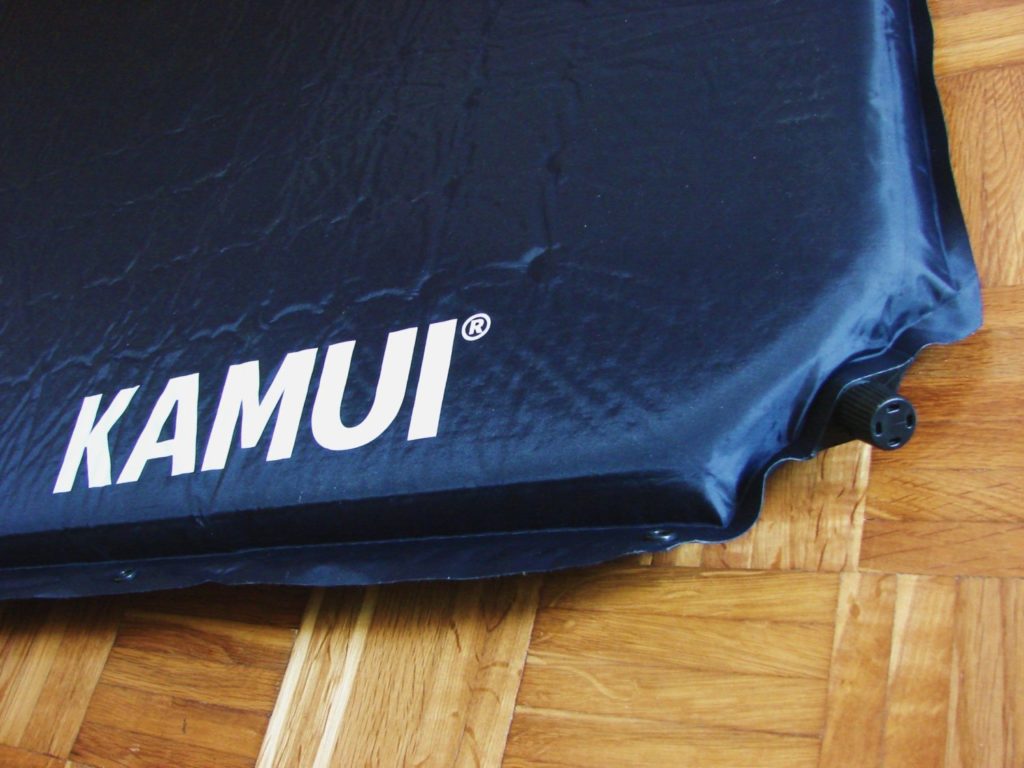

An excellent self-inflating sleeping pad maintains its lightweight pack-ability but often costs anywhere from $65 to $80. This puts it in a similar price range to a low-quality air mattress. While an air mattress at this price might be equal in comfort to its self-inflating sleeping pad brethren, it will likely be lacking in quality. Because high-quality self-inflating sleeping pads seem to be much lower than air mattresses, sleeping pads are a better choice for the hiker on a budget.
R-Value
Winner: Air Mattress
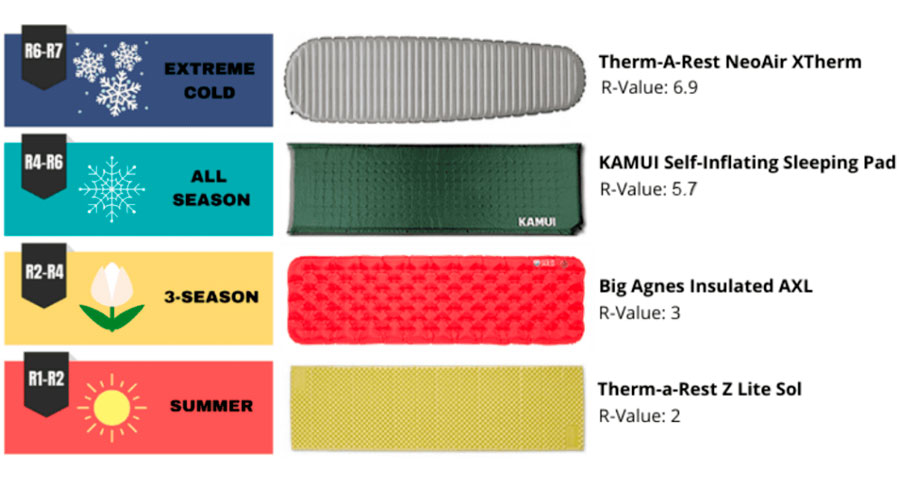

R-value measures the capacity of an air pad to resist heat loss to the ground. Technically, the R-value is a measure of thermal resistance. In general, R–value falls within the range of 1 – 7. The higher the number, the more thermally resistant the material or structure is, and the better your sleep pad will keep the warmth of your body throughout the night. Generally, the thicker the sleeping pad, the higher the R-value. The material of the sleeping pad also plays a role in the R-value rating. For this reason, air mattresses have a greater R-value than self-inflating sleeping pads.
If your camping bed is not adequate for the temperature, the ground will pull warmth and energy from your body. R-value is essential information when planning your sleep system for a camping trip. For example, you should expect chilly temperatures if you spend the night at a higher elevation. The R-value of your sleeping pad and bag makes all the difference in your sleep comfort.
Sleep System Importance
Winner: Air Mattress
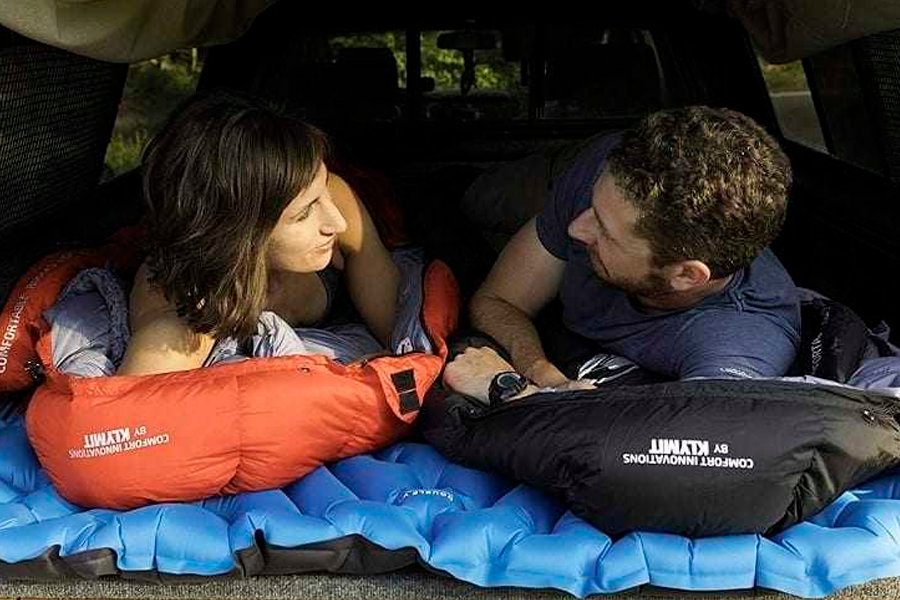

A camping sleep system includes everything you use to achieve a good night’s sleep outdoors, including sleeping bags, pads, and pillows. Camping shelters do not fall directly into the sleep system category, but whatever you are sleeping in will play a massive role in your sleeping experience.
Your sleep system increases in importance when you are using a sleeping pad. Because people usually use self-inflating sleeping pads in the backcountry and have a lower R-value than an air mattress, you must plan appropriately for the temperatures you will be experiencing. This means you must consider your tent and sleeping bag rating. The temperature rating of your sleeping bag and tent might make the difference between having a comfortable sleep or shivering throughout the night.
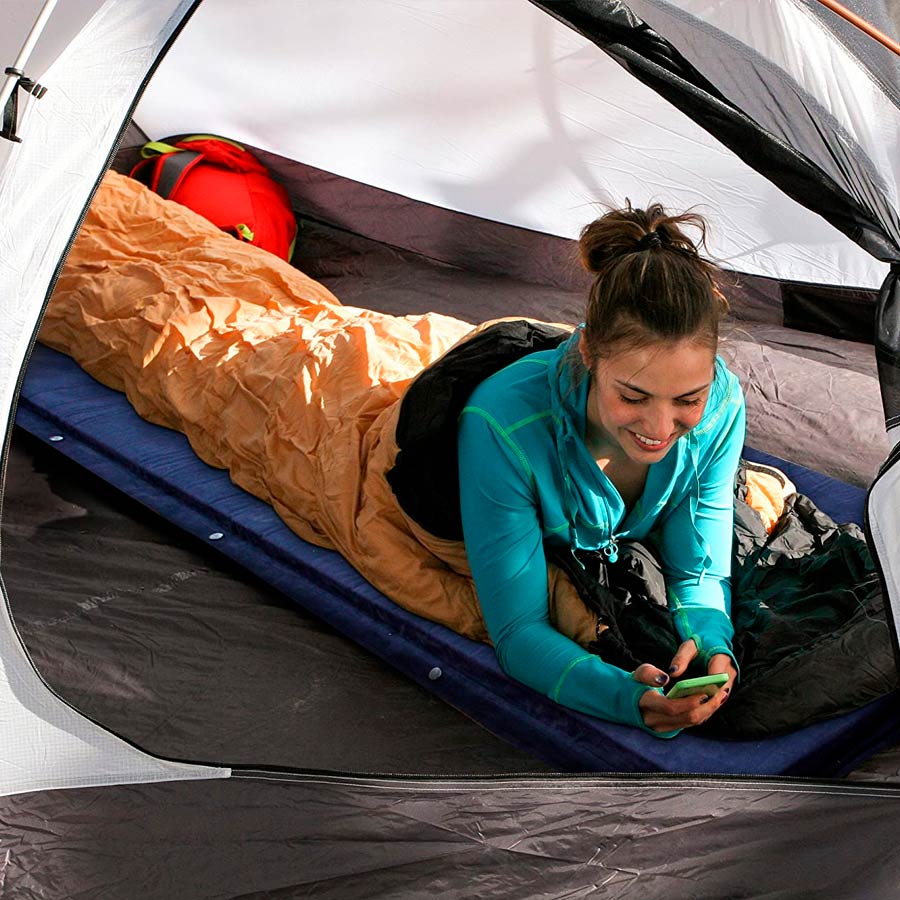

Luckily, you are often more than a few inches from the ground when sleeping on an air mattress. You are also usually not far from the car, so piling on the warm and fuzzy blankets might just do the trick on a chilly night! You do not have to consider much else if you are sleeping on an air mattress, which is why it is the winner of this category. If you are not in the mood to care about what season your tent is or what your sleeping bag is appropriate for, we suggest sticking with the air mattress when sleeping outside in the front country.
Comfort
Winner: Air Mattress
Air mattresses serve as an alternative bed. While self-inflating sleeping pads are comfortable, they do not have as much supportive padding as an air mattress. For instance, the design of self-inflating sleeping pads is usually lighter and more mobile. This means they tend to have less width and depth than your typical air mattress. A self-inflating sleeping pad has fewer features designed to benefit the user’s comfort. An air mattress is almost like a mattress you would sleep on in a hotel room.
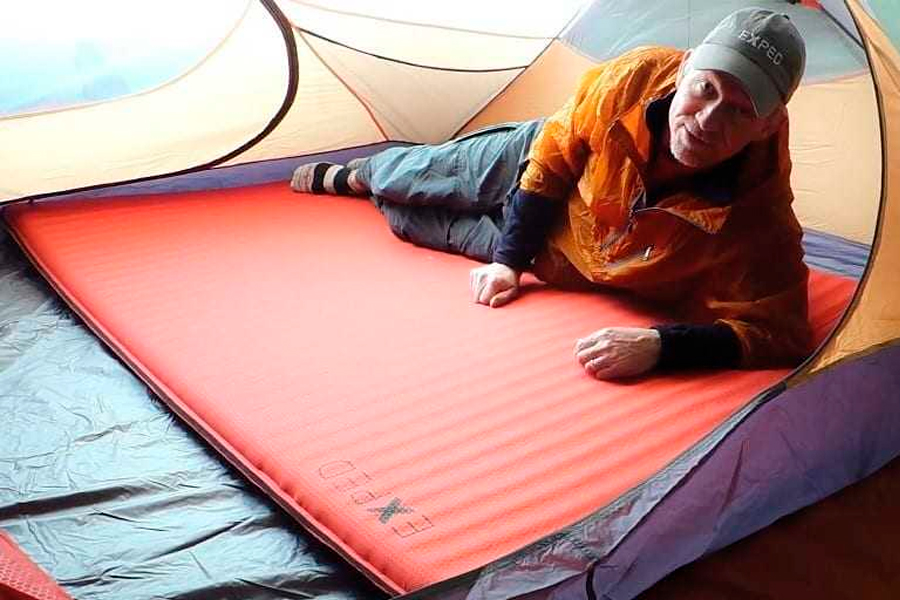

Campers who require or prefer a higher comfort level should opt for an air mattress. This will be most like your bed at home. Some higher-end air mattresses come with a zone firmness setting feature. This feature allows users to adjust how plush or stiff the bed feels. With or without this feature, campers sleep better on air mattresses than self-inflating sleeping pads. Air mattresses win in the comfort department almost every time!
Portability
Winner: Self Inflating Sleeping Pad


The most convenient option is a self-inflating sleeping pad because it is easy to carry or move from one place to another. Whether this means 20 feet (6.1 meters) from the car to the tent or 20 miles (32.19 km) in your backpack, a self-inflating sleeping pad is popular due to its portability. They roll up small and compact, easily fitting into any luggage or backpack. Even when they are ready, sleeping pads take up a fraction of the space that an air mattress does making it easy to move it around your space.
Air mattresses are often heavy and bulky, even when folded up. They also require a power source to inflate fully and are much larger than a sleeping pad. Transporting an air mattress in your pack would take up most of your space there, which is not ideal. Depending on the size of your air mattress, it might not even fit through your tent door while it is fully inflated! That makes moving an air mattress, deflated or inflated, less than ideal.
Ease Of Use
Winner: Self Inflating Sleeping Pad
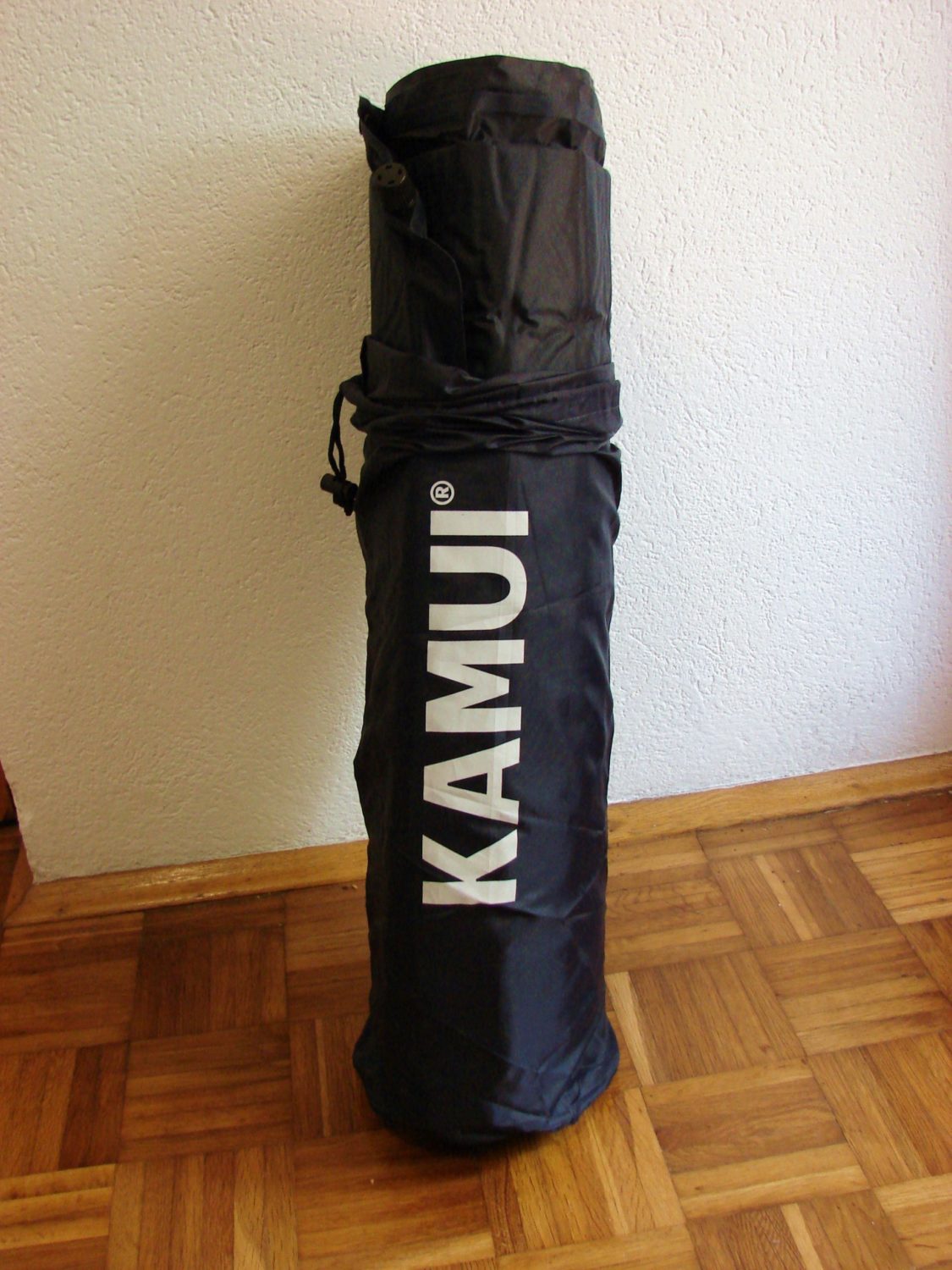

Seriously, what is worse than finally getting to your campsite and then taking forever to set up? Whether you are a few steps from your mode of transportation and you are simply excited to start your campfire, or you just spent most of the day hiking and you cannot wait to relax, ease of use is key.
Most self-inflating sleeping pads fold up to be small and compact. Sleeping pads range in thickness from 1-3 inches. The pads fold or roll into a compact size to fit your backpack. Sleeping pads are easier to pack and do not need an air pump to inflate them fully. Once you take them out of their carrying bag or case, you simply unfold them and start the inflation process. If you use an inflatable sleeping pad, you can use your lung power; if you use a self-inflating sleeping pad as described in this article, all you have to do is simply open the valve for airflow to begin.


An average camper can set up a manual (using a lung power) camping bed in less than 5 minutes. A self-inflating sleeping pad can take up to 30 minutes, but you can leave it to inflate on its own while you tend to other things. An air mattress can take 5 to 10 minutes to start and will require your full attention throughout the inflation process. A sleeping pad reduces the time it takes to create a safe resting area and is very simple. To store your self-inflating sleeping pad after use, you open the valve and squeeze the air out by rolling your pad up.
Best Uses
Based on the categories above, we have provided you with an idea of which sleeping arrangement is best for specific outdoor situations. Considering all of the facts, we outline each sleeping pad’s best qualities. This helps us justify which type of trip they might be most useful.
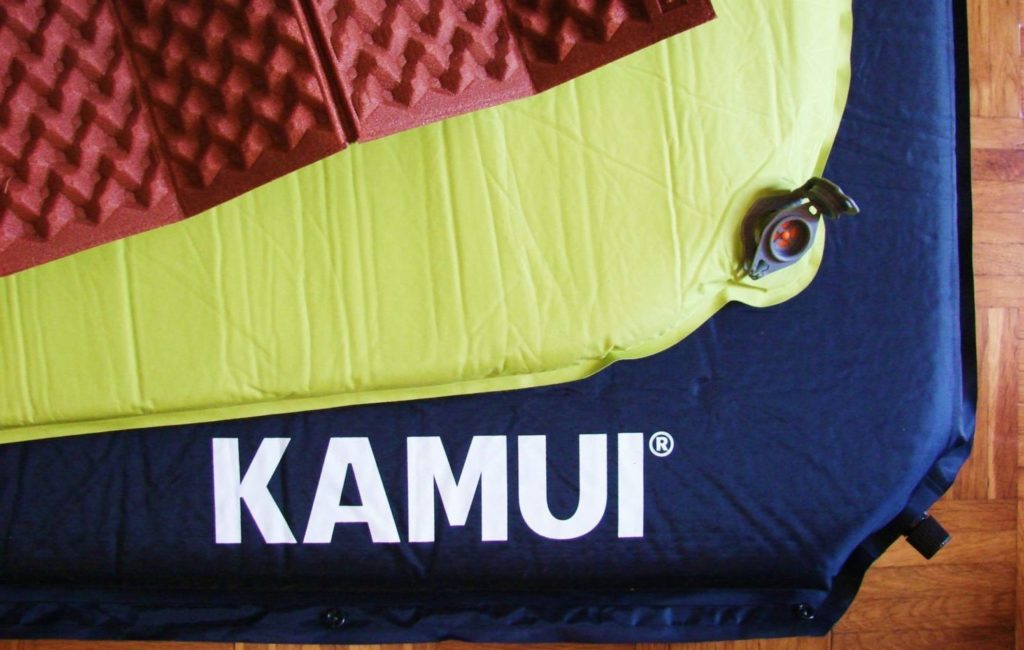

Car Camping
Winner: Air Mattress
Car camping consists of loading up your gear, driving to a campground or campsite, and setting up your tent and other belongings on a designated tent pad close to your vehicle. An air mattress would be ideal when you do not have to travel far with your sleeping gear.
In many ways, an air mattress is more comfortable than a self-inflating sleeping pad. We suggest using one, especially if traveling with your family. An air mattress is more relaxed because of its great size, which makes it great for sharing with others. Yet, this comfort comes with a price; an air mattress is not the most portable.
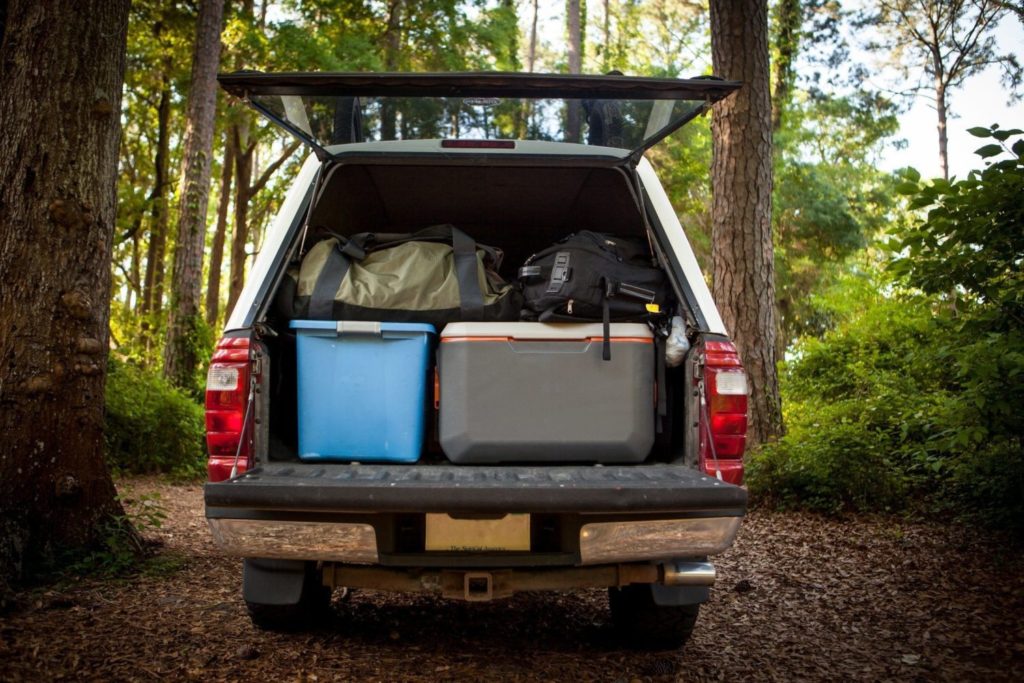

If you only move your sleeping gear a few feet from your parking spot, the lack of portability is not a concern. In this situation, comfort outweighs the bulky air mattress.
Air mattresses require air pumps to inflate them. It is important that you have a way to power your air pump or that you have a battery-powered air pump. You are in luck if you need to plug in your air pump. Many newer model vehicles have electrical outlets, but you can find an automobile auxiliary power outlet converter if yours does not.
Backpacking
Winner: Self-inflating Sleeping Pad
Hiking into a campsite in the woods with everything you need on your back is an empowering feeling. You will probably feel a very different emotion if your pack is too heavy. Because self-inflating sleeping pads are lighter than their air mattress cousins, they are the top choice when heading out on a backpacking trip.


Remember, backpacking can last from a day to a few weeks at a time. Traveling light is crucial if you want a successful hiking excursion. While those few extra pounds feel nonexistent during the first hours of your backpacking trip, but they start weighing down on you as you continue hiking.
Air mattresses are heavier to carry around than a self-inflating sleeping pad. For instance, air mattresses need a valve pump to inflate them into a functional bed. This pump not only adds extra space to your backpack, but you might not be able to use it unless you also carry something that you can plug it into.
Sleeping in your Vehicle
Winner: Air Mattress
The beauty of an air mattress is that it will blow up to fit almost any area. If you sleep in your vehicle’s back hatch or trunk area, an air mattress will blow up to just the right size. You must consider the size of your vehicle when choosing an air mattress.
Companies also make air mattresses designed for sleeping in the back seat of a vehicle. They fill the legroom space to create a perfect, flat sleeping platform. These specialty air mattresses would be worth looking into if you’re looking to camp out of your car rather than a truck or an SUV.
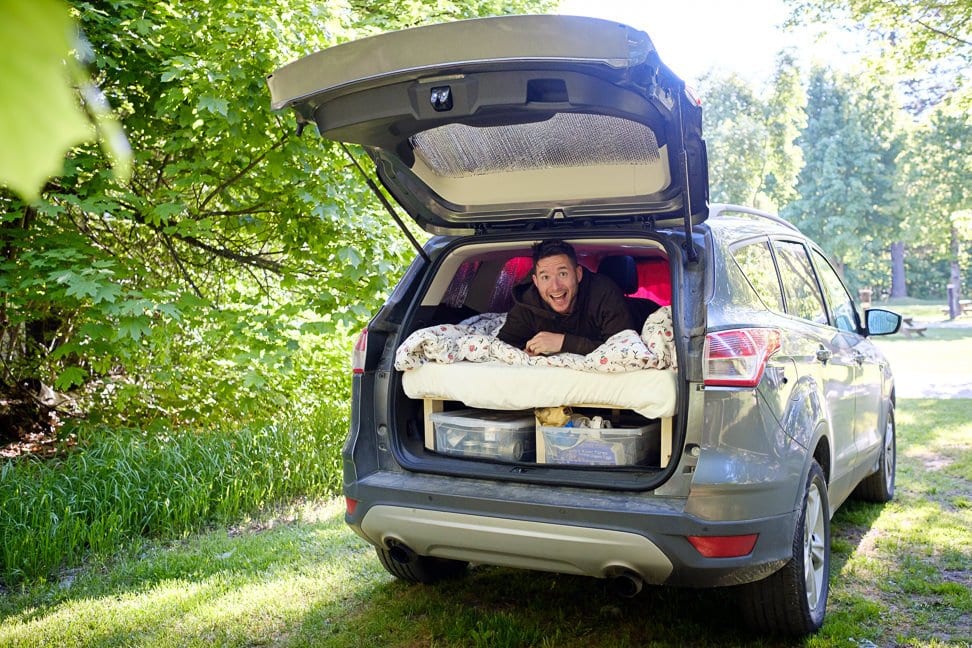

Hammocking
Winner: self-inflating sleeping pad
Using a self-inflating sleeping pad in a hammock is an absolute game-changer. You’ll have to wonder if you’ve ever had a more comfortable sleep outdoors after your first night using a sleeping pad and a hammock together. Generally, hammock setups are lighter and take up less space than a tent. Remember, you’ll want a sleeping pad to help you journey to a light pack. A self-inflating sleeping pad is arguably the only option when hammock camping.
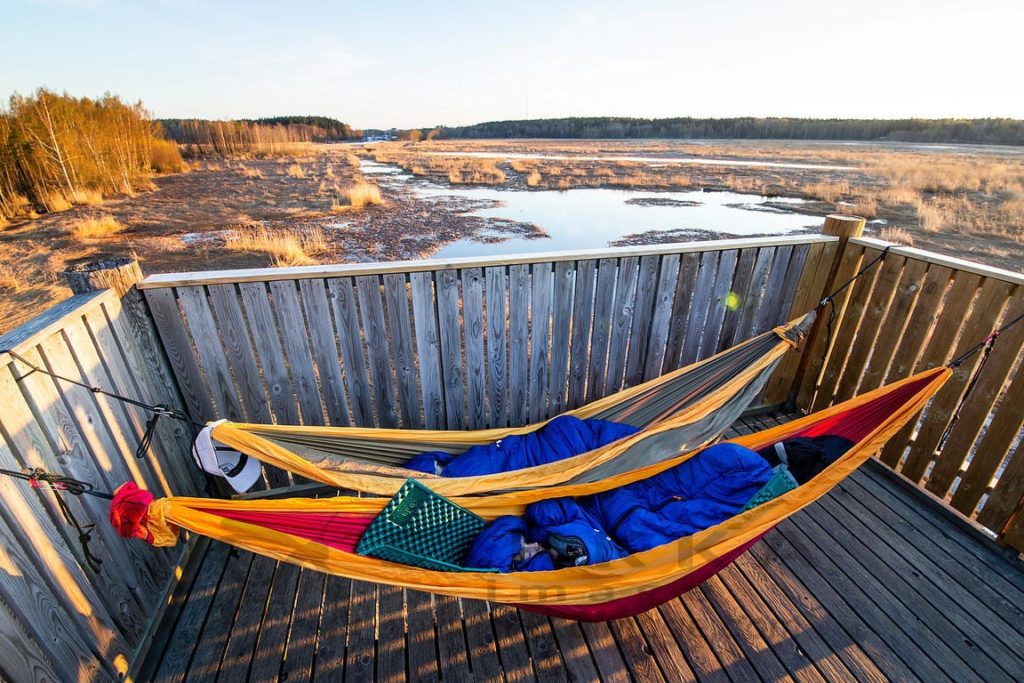

You can choose to hammock without a sleeping pad at all. If you’re doing this, you will want to ensure the temperature where you sleep isn’t dropping too low at night. We suggest using an under-the-quilt if you want to hammock without a sleeping pad in cool conditions—an under-quilt acts similarly to a sleeping pad to provide warmth. The under-quilt hands under your hammock trap the air between you and the ground by providing you with warmth. It’s a great product, but it will not help your sleeping surface to be flatter or cushioned as a sleeping pad would.
Family Camping
Winner: Self-Inflating Sleeping Pad
When camping with your family, you want a cushioning sleeping pad. The best idea is to use self-inflating sleeping pads and let your kids enjoy their time in the tent. Air mats are great options for camping, but they can be loud and easy to puncture. This is not a good option for camping with kids.
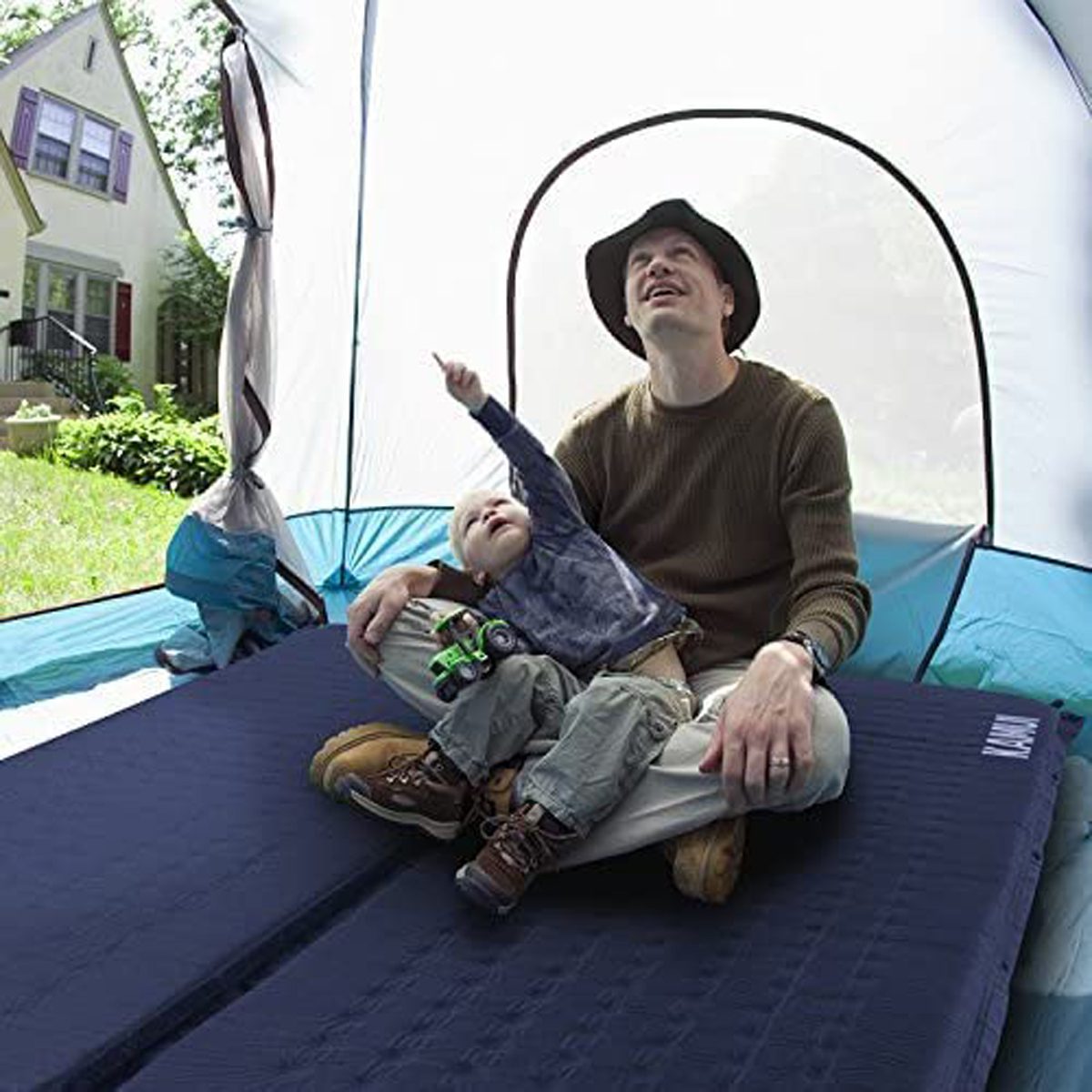

Air vs Self Inflating Sleeping Pads: Which is Better?
R-Value
Winner: Self-Inflating Sleeping Pad
Air pads are different from air mattresses; they are hollow and don’t have foam inside. We inflate air pads manually, and while they offer insulation to our body, they are often smaller than that of a self-inflating pad. There are some deviations from this rule, especially for more expensive models of air pads.
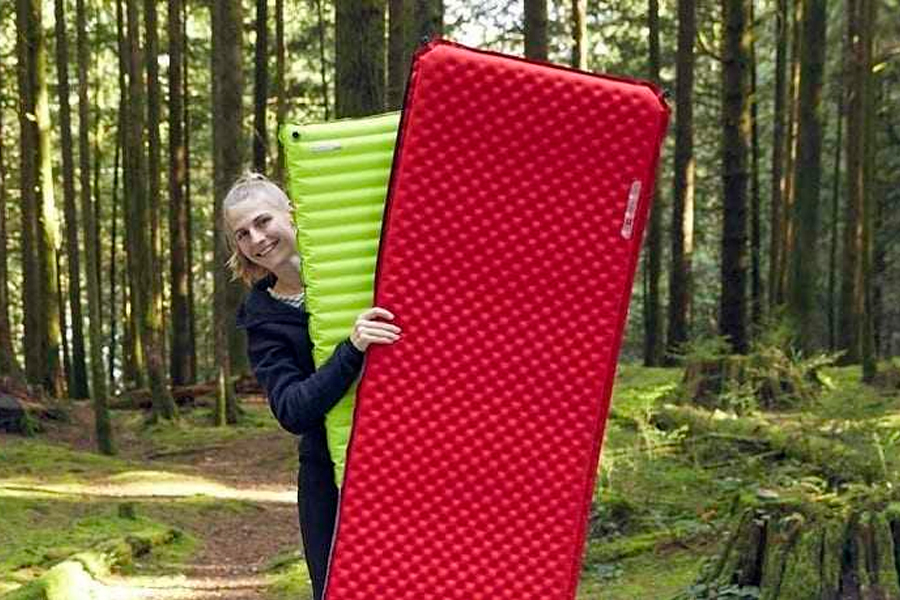

In our air vs. self-inflating sleeping pad comparison, the self-inflating sleeping pad has a higher R-value than the air mat. Self inflating sleeping pads have foam inside, which expands when air is added to the pad. This open-cell foam offers much more insulation than an air pad.
Adjustability
Winner: Air Pad
Air pads are easily adjustable to your sleeping needs, whether you want a stiff or soft sleeping surface. You can deflate and inflate air pads to your liking.
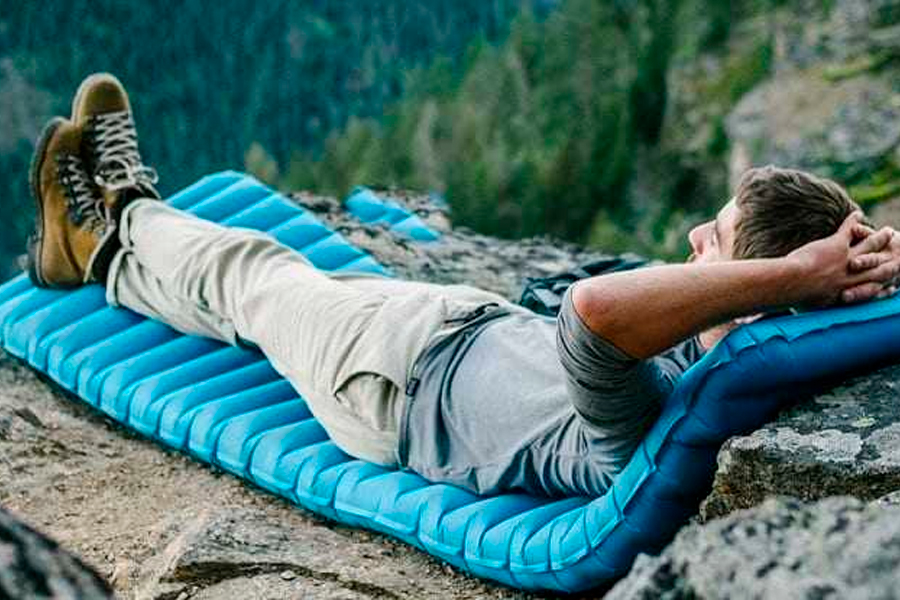

Packability
Winner: Air Pad
Both the air and self-inflating pads offer packability. The air pad can be compressed to a smaller volume. This is because air pads don’t have any foam inside, unlike the self-inflating pad, which is harder to compress since its foam is thicker. In this case, the air pad is the winner, with a smaller packed size.
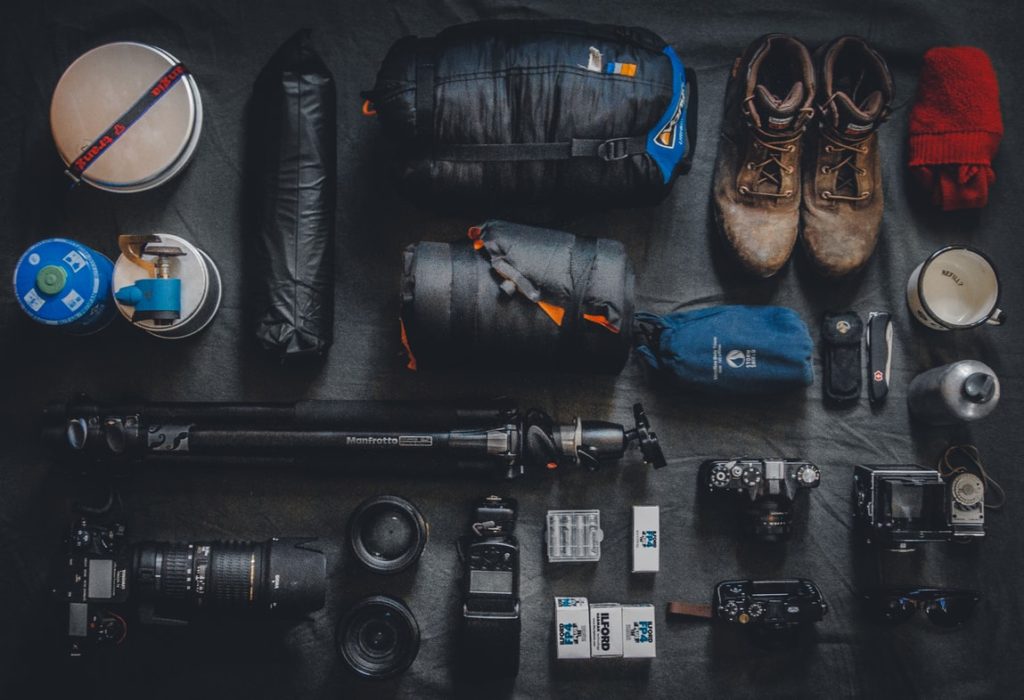

Weight
Winner: Air Pad
The air pad wins when it comes to weight. Its build has made it very light to carry. That’s why we recommend this type of pad for backpackers, thru-hikers, and other outdoor enthusiasts who need a light sleep setup.


Durability
Winner: Self-Inflating Sleeping Pad
Both air and self -inflating sleeping pads leak once punctured. This is because the self inflating pad has foam inside, which holds air much longer than the air mat. The air mat will deflate the moment we puncture it, while the self-inflating pad will deflate a small amount but not fully.
In terms of durability, the self-inflating pad is our winner. It will keep you insulated and ensure that you have a place to sleep during the night.


Price
Winner: It’s a tie!
Self-inflating sleeping pads, as well as air mats, come at the same price. One can find an air bed at a cheaper rate, but if you are looking for something durable that will offer you insulation during a cold night, you should look for intermediate price ranges.
The same goes for self inflating pads. You can find both cheap, medium-priced, and professional sleeping pads. If you are a beginner, both a cheap air pad and self inflating pad will come at the same price.
Conclusion of Self-inflating Sleeping Pad vs Air Mattress
To sum up, air mattresses are great for car camping or sleeping in your vehicle. They tend to have higher insulation than self-inflating sleeping pads. Also, they are more comfortable as you can easily share them, and if you are running out of space in your car, you can choose how to inflate them to fit the space. If you opt for packability and lightweightlessness, go for air pads. Struggling to choose between self-inflating sleeping pads, air mattresses or air pads? Self-inflating sleeping pads could be a better choice for the occasional camper because they are affordable, more portable, and easier to use, and some of the higher-end models match air mattresses in comfort posts. Consider buying whichever option works best for your camping needs.
The KAMUI self-inflating sleeping pad offers these benefits to its users:
- Super comfortable and connectable with other pads
- Fit for all seasons with an R-Value of 5.7
- Perfect for car camping with the family
- Lightweight and portable with bag
- Self-inflating valve for minimal time consumption
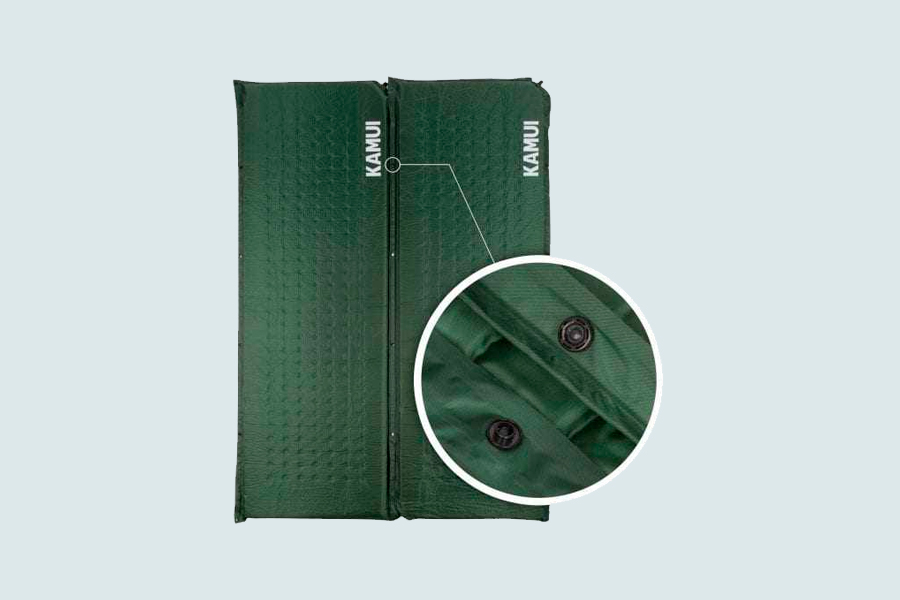

Do you have experience using an air mattress, an air pad or a sleeping pad during your camping trip?
Leave a comment below and let us know what you think.
Resources:
KAMUI Self-Inflating Sleeping Pad
- Connectable with multiple sleeping pads
- 4-season sleeping pad
- Provides great back support
- Comes with a storage bag
